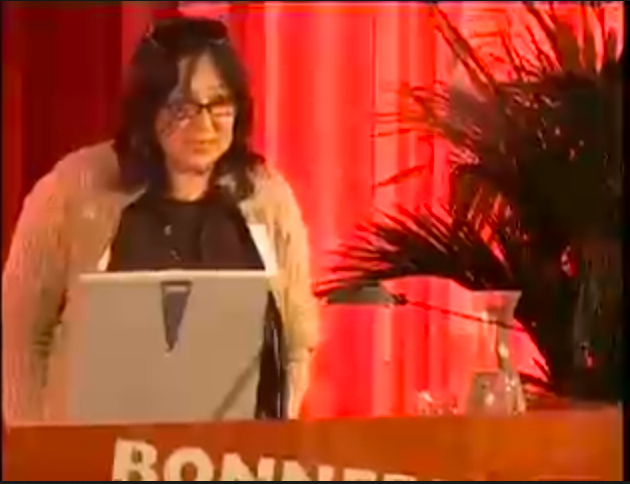 |
|
|
 |
|
Artist's lecture, Suchan Kinoshita (11 May 2006)
creator(s)
Suchan Kinoshita (artist)
Biography:
Suchan Kinoshita (1960) was born in Japan and lives and works in Maastricht. She studied at the Musikhochschule in Keulen (1981-85) and went on to study at the Jan van Eyck Akademie in Maastricht. She uses a variety of materials in her works which are exhibited often, all over the world.
Suchan Kinoshita’s work has been featured in international exhibitions since 1986, including 46th Venice Biennale and 4th Istanbul Biennale (1995); Manifesta 1, Rotterdam (1996); and Truce: Echoes of Art in an Age of Endless Conclusions, SITE Santa Fe, New Mexico, and Trade Routes: History and Geography. 2nd Johannesburg Biennale (1997). Her work has also been presented in such group exhibitions as Inklusion: Exklusion, Reininghaus and Künstlerhaus, Graz, Under Capricorn, Stedelijk Museum, Amsterdam, and Doppelbindung. Linke Maschen, Kunstverein, Munich (1996). Kinoshita has had solo exhibitions at De Fabrick, Eindhoven (1991); White Cube, London (1996); Stedelijk Van Abbemuseum, Eindhoven (1997); and Chisenhale Gallery, London (1998). She was the winner of the Prix de Rome in 1992.
In the past Suchan was very active in the theatre (Theater am Marienplatz / Krefeld) as an actor, director as well as builder of decors. This background has influenced her work and her oeuvre is clearly interdisciplinary. Kinoshita’s work invites viewers to bridge art and theatre, architecture and music in participatory experiences that emphasize movement, space, and time.
Abstract of lecture:
Suchan will discuss her work with particular reference to the ’Untitled’, 2000 (originally installed in a Japanese Gallery). This installation is bought by the Bonnefanten Museum and will be in exhibition. She describes her intent or the meaning of several elements of the installation and illustrates her story by showing many slides of different parts. Photographs of both the Japanese and the Maastricht situation are shown. She describes the process of re-locating as well as the necessity of making alterations. These decisions are related to the new location, a part of which is the different culture and public. This is one of the case studies within the Inside Installations project.
Click download for video (QuickTime).
 Copyright Protected Copyright Protected
|
|